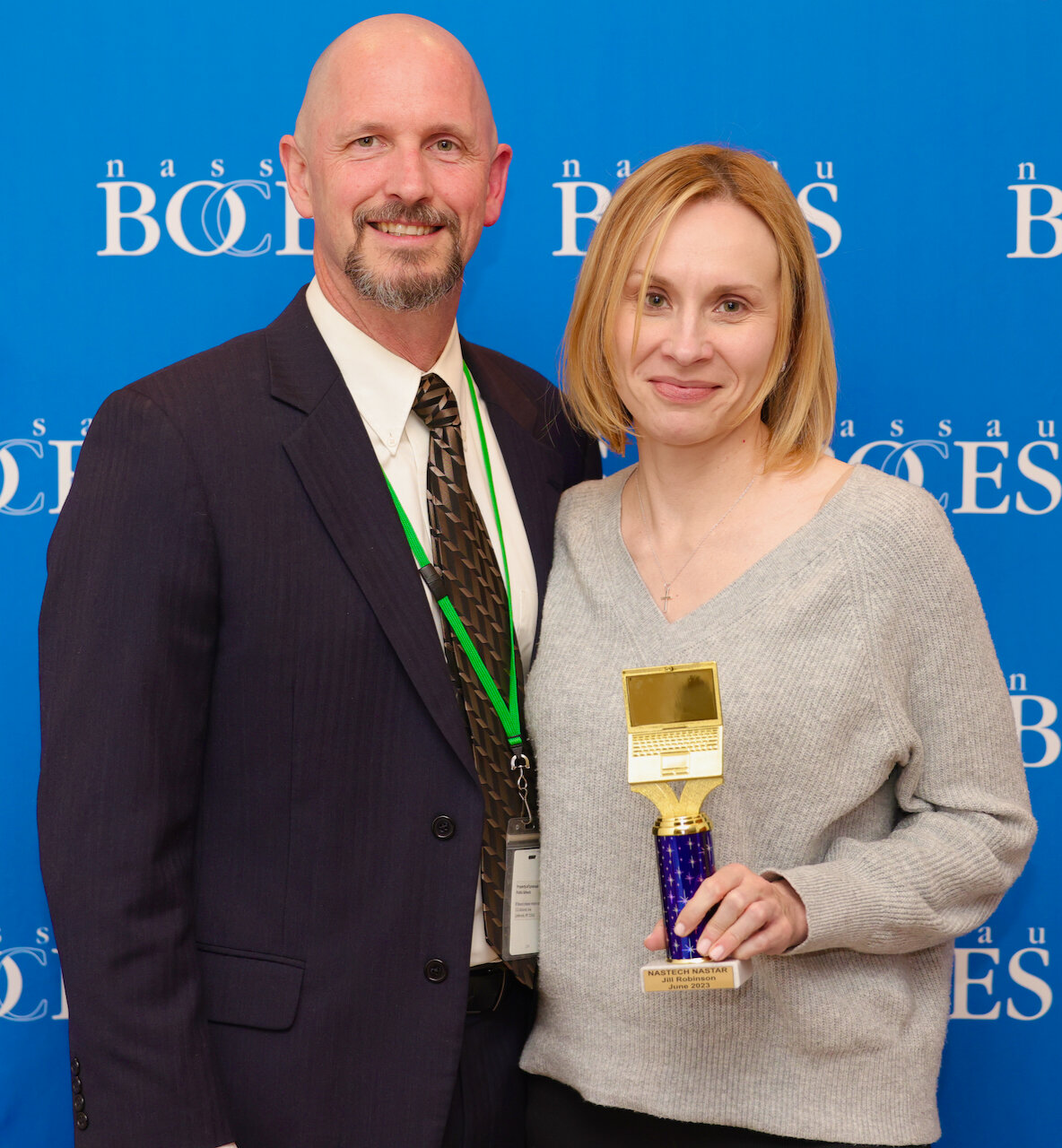How can technology help students? This Lynbrook teacher knows.
For more than two decades, Jill Robinson has been behind the best-in-class technology in the Lynbrook School District. This summer, she was recognized for all her hard work, when Nassau BOCES presented her with the NASTAR award — dedicated to educators who go above and beyond to make sure technology is serving both students and teachers.
“We created it to honor individuals for innovation, leadership and support of technology initiatives in their school district,” said Laura Pollak, supervisor of curriculum, instruction and technology for BOCES, or Board of Cooperative Educational Services. “It’s really for a champion for technology, who supports all the technology initiatives in their district.”
Robinson, the district’s instructional technology staff developer, has always made sure Lynbrook was ahead of the curve. She started a one-to-one program, in which each student got a device to work with. The program began with just sixth graders and expanded every year. Robinson and the technology coordinator spent months with the sixth-grade teachers so they could see how to best utilize technology in the classroom.
Her dedication to the school district over the past 24 years made her an obvious choice for NASTAR, which stands for Nassau Association of School Technologists Award Recipient. From in-classroom live streaming to remote learning preparedness, Lynbrook has been able to accomplish big things with technology, thanks to Robinson’s behind-the-scenes work, school officials said.
Robinson first began as a middle school computer teacher with the goal of teaching kids computer literacy. Like technology itself, her position quickly evolved. Robinson now trains and supports teachers and students in the use of different technologies, and also shows educators how to effectively implement technology in the classroom.
That kind of knowledge prepared Lynbrook for online learning during the pandemic. The school district already had the needed infrastructure in place — students received their own device to bring home, and they already knew how to navigate an online, technology-based curriculum. Though it was a difficult time for everyone, Robinson said, the existing foundation was helpful for the switch to online learning.
“The fact that Lynbrook has always been a supporter of our technology program, and most of the teachers were already well-versed in at least some of the products that we use, I think it made the transition a lot easier for a lot of our teachers,” Robinson said.
“And I was there in the back, trying to support them in new things they want to do, or educate their students in a way that they had never had to do before,” she added.
The boundaries that kept kids apart in the past, like being in different grades or schools, are now bridged through technology. Kindergarteners and high school students have been able to connect, to learn from each other during science research projects. The high school anatomy class is able to connect with Liberty Science Center to view live surgeries. Students can even watch live images of the Titanic at the bottom of the Atlantic Ocean, all from their classrooms.
“I think communication between our students and outside the Lynbrook walls has made our students’ experience even more enhanced,” Robinson said, adding that live video conferencing keeps students engaged and interested. “Things that they normally wouldn’t have been able to do even five or 10 years ago — now they have access to a wealth of information that’s available to them.”
Robinson said that technology could never replace a great teacher, but could be a helpful tool to assess student learning, to help teachers deliver curriculum and to help students absorb that curriculum.
In addition, schools today are already reliant on technology — Wi-Fi quality can make or break a lesson plan. Robinson works to ensure that the technology is being used in the most efficient, effective way possible, and serves the needs of both educators and students.
“Technology is already integrated in schools,” Pollak said. “But the goal is how do we actually ensure that the technology is always functional, always accessible, always supported, and also meaningful and enriching?”
Robinson’s goal is to make sure students are equipped with the skills to pursue whatever path they choose after graduation — and technology is the key, she said. To her, the most exciting part of her job is helping the school district evolve alongside technology.
“I think that’s what my favorite part of this job is,” Robinson said. “There’s always something new to learn and do, and to incorporate and see if it’s appropriate for our students, and work with the teachers and the students, to help the teachers be more proficient in their technology. And hopefully that will be passed on to the students so that they’re prepared for when they leave us.”











